Temporary Chicken run
Create a safe space for your chickens with ease with this DIY temporary chicken run! Using just a few simple supplies such as chicken wire, zip ties, and fence posts, you can create a secure enclosure that won’t break the bank.
In this guide, we’ll show you how to set up a temporary chicken run in no time that you can use for raising chickens.
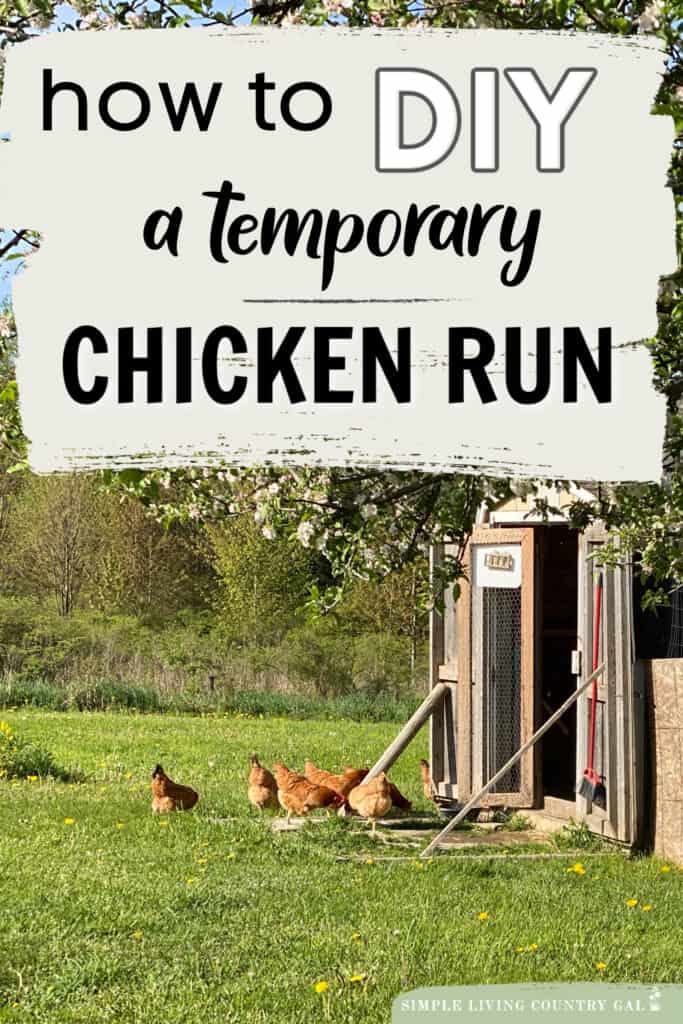
What are the Benefits of Using a Temporary Chicken Run?
- A temporary chicken run is great for anyone who wants the convenience of keeping their chickens in one place without having to build a permanent structure.
- It’s helpful during the rainy season as it allows you to move your chickens to another location while you wait for your permanent run to dry up. This will help to keep the inside of your coop clean, along with the eggs.
- It’s also an inexpensive option that can be helpful if you’re on a budget.
Why do chickens need a run?
A chicken run will keep your chickens safely inside and away from predators. A run will also protect your flower and garden beds from scratching hens.
How to DIY a Temporary Chicken Run
The best part of this project is I can do it without any help. As an older homesteader being able to do projects like this on my own is very satisfying. I use lightweight garden stakes for our run so I do not need to swing a sledgehammer to get them into the ground.
Step #1. Gather Supplies
Before you get started, be sure to have the following supplies on hand:
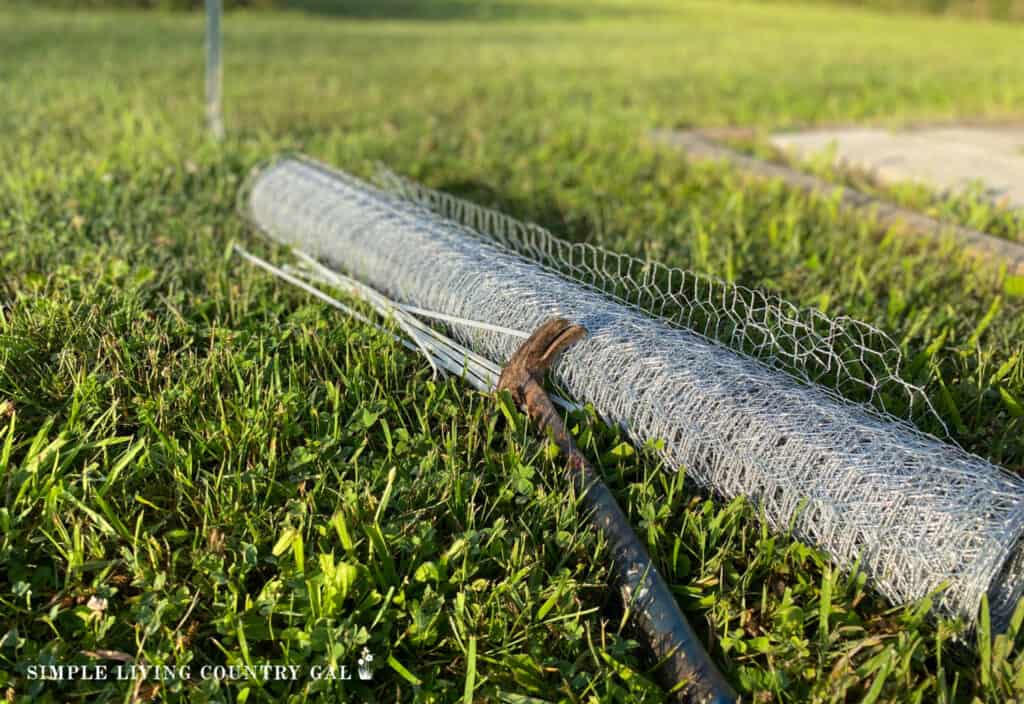
You probably have all of these supplies around your home now, but if not check out a few yard sales. You can also purchase these items at your local home improvement store or online.
Step #2. Mark Out Your Space
Once you have all your supplies, it’s time to mark out the area where you want the chicken run. I like to “eyeball” things, but if you want a neater setup, you can use temporary stakes and string or garden flags to create a perimeter of the space you’d like to enclose.
Step #3. Set Up Fence Posts
Once you have your space marked out, it’s time to install the fence posts. I find having a stake every 3 feet is all I need to keep my flock inside.
Using a hammer or sledgehammer, bang each post into the ground. Since this is a temporary chicken run, you will not need to install things permanently.
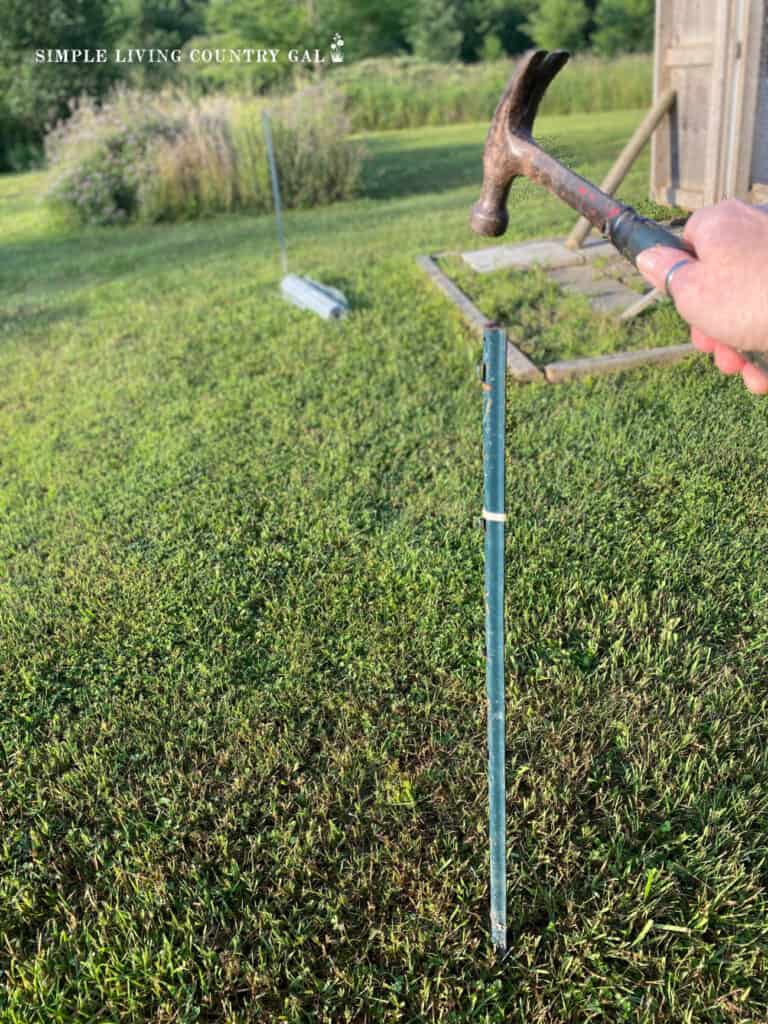
Step #4. Attach Chicken Wire
Unroll the chicken wire along the perimeter of your space and secure it to the fence posts using zip ties. Make sure you leave no gaps in the chicken wire, as this could allow predators access into your chicken run.
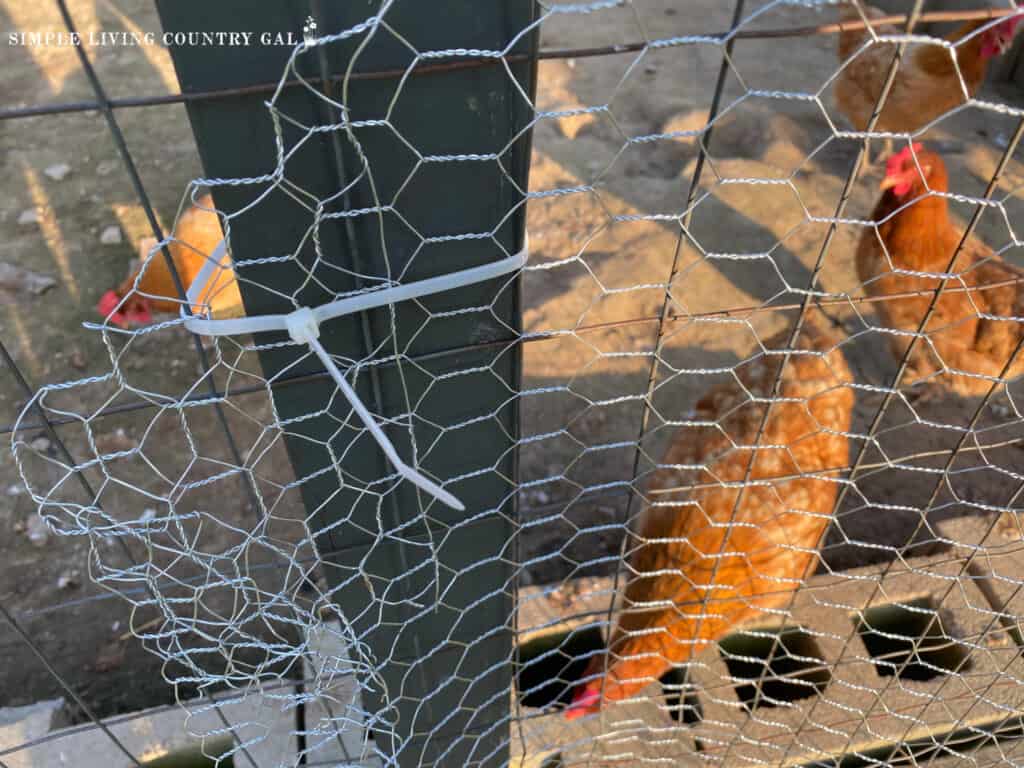
Step #5. Secure Areas
Chicken wire is easy to work with, and you can easily fold it under at the ground level so your chickens can’t find a way out.
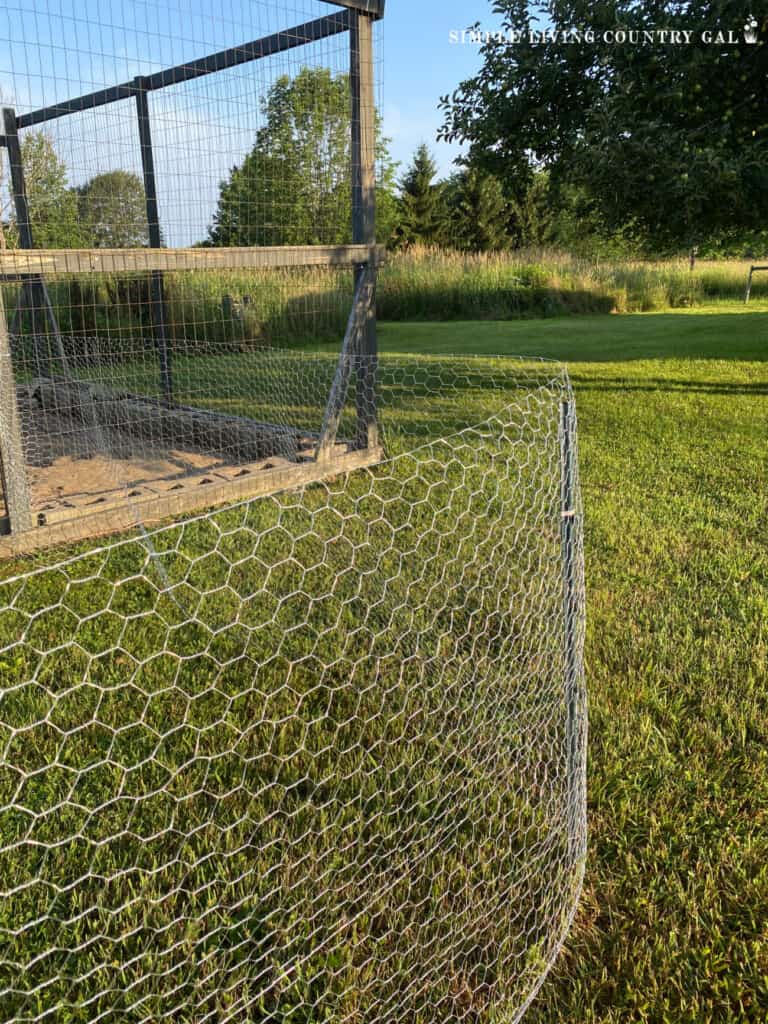
Step #6. Leave an opening
Be sure to have a way to get in and out if needed.
Step #7. Add water
Be sure to have water in your temporary run. Chickens will find enough to eat in the ground, but water, on the other hand, you will need to provide. You can use a water bowl or chicken waterer, being sure to change the water daily.
How do you make a predator-proof chicken run?
The best way to make a predator-proof chicken run is to make sure there are no gaps in the chicken wire so predators cannot gain access to the enclosure. Additionally, you can secure any areas where the chicken wire meets the ground by burying the bottom edge into the dirt.
If air predators are an issue in your area, you will want to have chicken wire that is at least 5-6 feet high. If you can not find the size you need, you can double up shorter fencing securing it with zip ties before attaching it to your stakes.
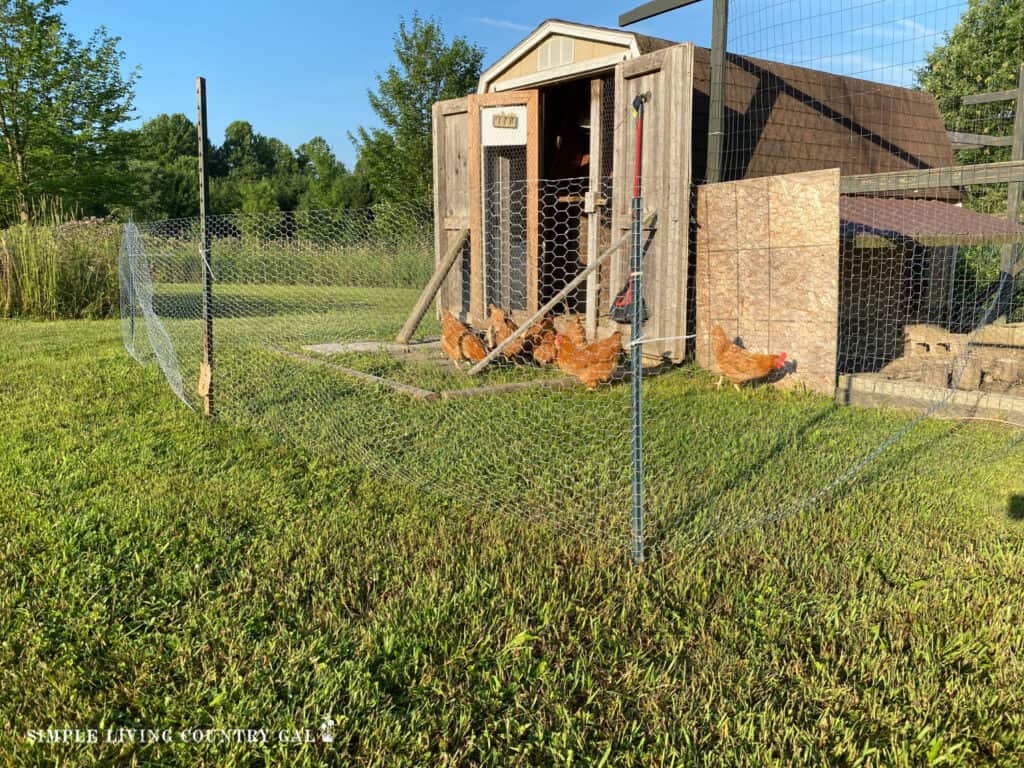
Keep your run clean.
As you care for your chickens, keeping the chicken run clean is important. To do this, remove any droppings or food debris every few days. Rake things into a pile and put the debris into your compost bin.
Keeping a clean temporary run will discourage predators and pests from coming near tjhe area. Having a temporary run can make cleaning the chicken run much easier, as it allows you to easily remove the fence to clean and then set it back up once you finish cleaning.
Building a temporary chicken run can be an easy and cost-effective way to house your chickens. With the right materials and tools, you can create a secure and comfortable space for your flock in no time.
Giving your chickens fresh ground to scratch on will be beneficial to them and to you as well.
More Chicken Housing Resources:
- Turn an Old Shed into a New Chicken Coop
- How to Build Roosts for Your Coop
- DIY Nesting Boxes for your Coop
DIY Temporary Chicken Run

Create a safe space for your chickens with ease with this DIY temporary chicken run! Using just a few simple supplies such as chicken wire, zip ties, and fence posts, you can create a secure enclosure that won’t break the bank.
Materials
- A roll of chicken wire.
- Heavy-duty zip ties
- Metal garden fence posts
Tools
- Hammer or Sledgehammer
Instructions
- Mark out the area you plan to enclose for your chickens.
- Hammer a garden stake into the ground every 3' for where the fence will be.
- Unroll the chicken wire along the perimeter of your space using the stakes as your guide.
- Use zip ties to attach the chicken wire to each garden stake.
- Be sure the bottom of the fence is secure to the ground so your chickens can not get out.
- Leave an opening so you an get in and out of the run easily.
- Add in a source of water for your chickens.
- Let your chickens in!
Notes
If air predators are an issue in your area, you will want to have the chicken wire that is at least 5-6 feet high. If you can not find the size you need, you can double up shorter fencing securing it with zip ties before attaching it to your stakes.
Recommended Products
As an Amazon Associate and member of other affiliate programs, I earn from qualifying purchases.
-
ARIFARO Fence Posts 3 Feet Sturdy Duty Metal Fence Post, Pack of 10, No Dig Garden U Post for Wire Fencing Steel Post for Yard, Outdoor Wire
-
Oksdown 100 Pack 12 inch Black Heavy Duty Zip Ties Thick Cable Ties with 120 lbs Tensile Strength Large Plastic Wire Ties
-
Fencer Wire 20 Gauge Galvanized Poultry Hex Netting with 2 inch Mesh (4 ft. x 50 ft.)




Not sure about where you live, but our “air preditors” are Hawks and owls… which have absolutely no problem flying in over a 6′ fence. Were you talking about making a roof covering?
Good point on the fence height; what size do you have?
Yes, we have hawks and owls here, but we have never had an issue with them and our chickens. We do have a small roof overhang in our coop, but no complete covering. I would do the best updates for where you live to ensure your chickens are well protected. Our biggest predators where we live are dogs.
Tracy Lynn